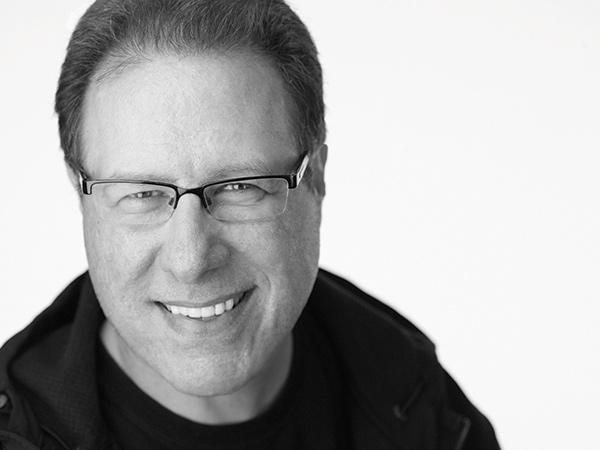Ask a Pro: Pro Photographer & Photoshop Expert Scott Kelby Answers Questions from Shutterbug Readers

Q. In the July 2017 issue, one of the questions dealt with processing black-and-white images in Lightroom as opposed to shooting black and white in camera. One of your suggestions was using add-on programs in Lightroom such as Nik’s Silver Efex Pro to “open up a whole new world of black-and-white possibilities.” How much more benefit or advantage do you get from using an add-on program versus just learning the advanced features of Lightroom and creating the effects yourself? Is it worth spending the extra money on the add-ons or should you just learn to use Lightroom more efficiently?
A. Plug-ins like Nik’s Silver Efex Pro make the process much faster and easier, plus you get the benefit of not only the technology behind the plug-in, but the expertise of those who created the presets that come in these plug-ins. I’m fairly competent in Lightroom and can create a pretty solid black-and-white image just within Lightroom, but I prefer the looks that Silver Efex Pro gives me, as many of Nik’s presets are based on recreating traditional black-and-white film looks. If you’re a Lightroom shark, you can get close, but most folks won’t be able to nail film emulation like the Nik folks did, which is why to this day nearly every black-and-white pro I know uses either Silver Efex Pro or Macphun’s Tonality plug-in. By the way, Silver Efex Pro doesn’t require “extra money”—it’s free; its future is uncertain, though, since Google announced they were no longer updating that software, so when it breaks for you, it’s done.
Q. How do you organize and save digital shoots on and off the computer? My photos are all over the place and I have trouble finding them when I look back. My shoots are all mixed up with my casual snapshots on my computer. I use Nikon ViewNX and have an Iomega backup. Years ago I tried saving selections on CDs but a whole shoot wouldn’t fit on a CD and now it seems like CDs are becoming obsolete. My whole process is a mess. Please help.
A. OK, it’s time to start from scratch and ditch the whole CD idea. CDs go bad quicker than you might think and when they die there’s no practical way to recover the images on them, so let’s get them backed up now. Start by buying an external hard drive big enough to hold all your images; a Seagate Expansion 4TB Desktop External Hard Drive will cost around $99. Then, move all your images (from your computer, from your CDs, etc.) onto this external hard drive and put everything inside one single folder. While you can have as many subfolders inside that one folder as you want, start with one main folder and drag your other folders inside it. You’ll need categories to sort your images into, so make a folder for each main type of photo you shoot (family, travel, landscape) and drag each folder into the proper category. At least now you know where all your images are: they’re all in one place, inside one folder on that external hard drive, and they’re somewhat sorted into categories inside of that. Now, buy another of that exact same external hard drive and drag your one folder onto that second drive. You must have at least one backup because all storage devices go bad at some point and this way you’ll have a backup copy on your second drive. It’s a start. By the way, this process will take way less time than it sounds like it would, and you’ll be so glad you did it.
Q. For the past seven years I have been using Aperture on my MacBook for photo editing. I recently updated my laptop to the latest version 10.12 and in the process lost my Aperture editing capability as Apple no longer supports the program. I am considering using Photoshop or Lightroom for photo adjustments, however, I know nothing about either program. What is the difference between Photoshop and Lightroom, and which is most comparable to Aperture?
A. Lightroom is by far the most comparable to Aperture—in fact, you’ll find so many similarities that I don’t think you’ll have a hard time making the jump at all. Lightroom actually has a built-in Aperture Library importer for people in your same situation, so I would definitely use it. (And now a little plug for my education: at KelbyOne.com we have a course on how to make the move from Aperture to Lightroom.) As for Photoshop, you’d want to look at it once you’re very comfortable with Lightroom, and only when you find something that Lightroom just can’t do. And Lightroom can do so much that it might be a while before you get to that point. You can get Adobe’s Photographer’s Bundle for $9.99 a month, which gets you the latest versions of Lightroom and Photoshop. So when you’ve got Lightroom down and decide you want to “unleash the beast,” you’ve already got Photoshop waiting for you (and yes, I have a course called “Photoshop for Lightroom Users” that you might find helpful at that time).
Q. I was faced with the same problem your reader [August 2017 issue] was faced with—how to fit my digital prints into those standard frames. However, the frames weren’t the problem—it was the mats. Mats come in standard sizes and I had to get expensive custom cuts in order to accommodate my vision of what my photographs should look like. I’m still searching for companies that sell precut mats in the sizes you mentioned. The framing will be the easier part once I can reduce the cost of custom mat cutting.
A. There are online custom mat services, like matboardandmore.com, that make digital print size mats at really low prices. However, like I told my reader in that last response, not only will labs like Mpix and Bay Photo Lab make digital camera size prints, they’ll make mats that fit those print sizes, too, so you’re covered either way. If you’re just looking for mats, give Matboard and More a look; I’ve heard lots of great comments about their work and prices.
Scott Kelby is a photographer, Photoshop Guy, award-winning author of more than 50 books, and CEO of KelbyOne, an online education community dedicated to helping photographers take the kinds of images they’ve always dreamed of. You can learn more about Scott at his daily blog (scottkelby.com), or follow him on Twitter: @scottkelby.
Editor’s Note: Ask a Pro is a Q&A column from professional photographer, writer, and educator Scott Kelby. Scott is here to answer all your photography-related questions, so if you have something you’d like to know, e-mail him at editorial@shutterbug.com (with “For Scott Kelby” as the subject line) and your query could be featured in the next edition of Ask a Pro.
- Log in or register to post comments

















































